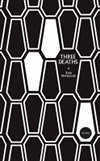
Three Deaths
Josip Novakovich
Snare Books
$12.00
paper
109pp
9789780966575
The first story in Josip Novakovich’s thin volume evokes Steinbeck’s The Pearl, with which it shares many elements: an idyllic family, the poisoning of a child, a bribe for the doctor. In Novakovich’s version, however, the role of the stinging scorpion is played by a syringe of measles vaccine. America was testing immunization formulae in Yugoslavia in 1952 because of the latter’s absence of medical malpractice laws, but a bad batch of serum killed eighty children. Institutional corruption in both America and Croatia forms the backdrop of the story, which introduces readers to a Croatia where politics, religion, and family crowd the sparse storyscape with guilt and duty until it’s as though the devil’s own bureaucrats are in charge.
Novakovich’s prose moves through the first two stories just like the overwhelmed family it describes: with methodical purpose. Readers feel as though there is a God, and he cares, he really does; one just has to hold on till he can get to this particular problem, because the world is a real mess. In the meantime, readers are dragged with deliberate grace through the machinations of mortality, so that each death is rendered unique.
The book’s third piece is billed as a personal essay. It is the author’s recollections of his mother as he travels from the United States to Croatia to attend her funeral. In it he reveals
that the poisoned golden child is the author’s older, unknown sister whose death destroyed their mother’s hope, while the patriarch on his deathbed is their father. But while the two stories are told with minimalist clarity, the essay is digressive; it slides between the present and the past, through recollected dialogues with the author’s brothers and his hypercritical mother. It ties together the three deaths, and contextualizes them, but some of the paragraphs seem to be too personally significant to the author for him to effectively communicate why they should be to the reader. The failure to untangle this knot of emotion perhaps says more than anything about the relationship between mother and son.
The three stories and the deaths they describe can be read, given the wars endured by Croatian society, as stand-ins for Innocence, Security, and Hope (or perhaps Potential); the allegories seem to sublimate from the surface of the patient plots. The mastery of this volume, though, is in its pacing. The author gives us a hint as to the significance of his rhythm in the second story, as the narrator walks with his father’s funeral procession. So to give Novakovich the closing words, which say a great deal about this poignant collection:
The steadfastness of the pace held a lesson for us, some lesson anyway, as we shifted from one leg to another. Howsoever slowly we went, by howsoever many places, we could not deviate from the crooked path that led into the graveyard. mRb






0 Comments